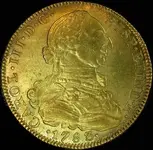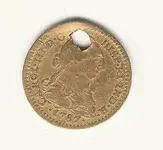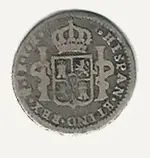SWR said:
gollum said:
Even if found on private property, with the owner's permission. If you found something like that, Uncle Sam would swoop in and snatch it up, claiming it for the public good. I guarantee it!
You guarantee it...how?
Rather than endless "what if's" and probabilities of how "Uncle Sam will swoop in and snatch it up"...how about posting some laws, state statues or
something with some sort of legal significances to it.
That, and your make-believe-expence-chart is way off

First,
My "make-believe-expence-chart" is a LOW average. Depending on how far from home you are, incidental expences, hiring of local contractors to do any work, and since your experience seems to be more in water than on dry land, you need to know about a little thing called a "reclamation bond" you have to pay to the state or federal agency that administers the land your Treasure Trove is buried in (BLM, Dept. of Agriculture, US Forest Service, etc). The reclamation bond is usually between $2500 and $15000 depending on how much earth you will have to turn up, and how heavy the equipment you be using is. This is a "bond" that insures you will replant grass, bushes, and trees. Refill whatever holes you dug, and bring the area back to the same state it was in before you started digging. And may I add, that whatever reclamation you do will not be sufficient to get your bond back (add that into my "make-believe-expence-chart").
See SWR, I have a good bit of experience with this subject, as well as knowing someone who has been through the wringer trying to keep his find legal, SINCE 1986! His name is Gary Oliver, and he has had claim on the place SouthWest of Tucson where the Jesuits of the Tumacacori Mission had a Gold/Silver Mine named "Virgen de Guadalupe". When the expulsion happened in 1767, they exploded a cliff down on top of the mines entrance (after backfilling it with ash from the smelter, and surface soil). I forgot to add that supposedly before doing this, they hid several hundred bars of both silver and gold inside.
It has happened in the past.
Let's use Arizona as an example. There is such a thing as the Arizona State Antiquities Act. It basically states that any object found in the state that is in excess of 100 years old, is deemed "of historical significance", and therefore becomes property of the state. Don't believe me?
In 1964, when the SEC was investigating a company called MOEL, Inc (Mining, Oil, Exploration, and Leasing), they learned that Clarence O. Mitchell had possession of four stones said to have been found in Arizona in 1949, that were engraved with maps to a fabulous treasure. While the investigation was still ongoing, they confiscated the stones from Mitchell to have them tested to see whether they could ascertain their age to be older than 100 years. Since the stones contained no organic matter, it was impossible to "LEGALLY" find their exact age. If there would have been something dateable in the stones, that would have placed their age in excess of 100 years old, they would have been declared property of the State of Arizona. Tests performed at ASU came back as inconclusive. A previous test performed at Redlands University, by Professor Stephen Dana (Head of the Geology Dept.) declared that "in his opinion" the stones were "at least 100 years old". So, because the ASU tests were inconclusive, and Professor Dana's Testing only came back with his "opinion", the state could not legally keep the stones. They were returned to Clarence Mitchell. You have most likely heard about these stones. They are commonly called "The Peralta Stones" or "The Stone Maps".
So, I hope that about covers anything you might want to know about land based treasure hunting. If you have any other questions, or want to know more about Tumacacori, just let me know.
Best,
Mike
THIS IS WHAT IT'S ALL ABOUT:










 lol
lol